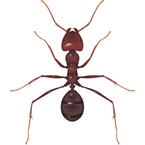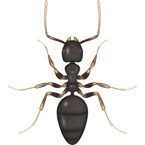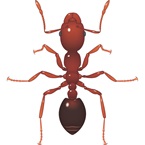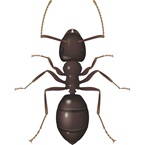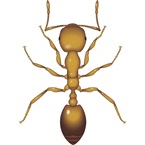Species category: Ant
Scientific Name: Tapinoma melanocephalum
Family: Formicidae
Description
Very small ants, the workers are 2mm long and have a pale, almost translucent abdomen and legs, hence the name. The head and thorax are a deep brown colour. The almost transparent body makes these tiny ants look even smaller again.
Behaviour
It is an invasive species that forages for all kinds of nutrients and will live on grease and other insects but favours sweet foods. Ghost ants have polygene colonies (multiple queens in a single colony) with individual nests containing between 100-1000 workers. One colony may consist of several nests which readily exchange workers.
Region
Found all across the world, they are one of the most widely distributed ant species.
Habitat
Ghost Ants tend to prefer warmer, wet habitats. Colonies are generally located outside but there are also colonies that set up home indoors. Indoor Ghost Ants select their habitats based on their preference for warmth and high moisture requirements. Their trails often lead to sinks, baths, toilets and showers.
The nests are frequently located within wall voids, behind skirting boards, or in potted plant soil. Workers run rapidly and erratically, trailing along edges and corners.
Risks
This ant’s love of sugary substances attracts them to the sweet secretions of aphids, which they protect and in doing so, allow the aphids to continue to destroy the plants they inhabit.
Indoors, they contaminate household foods by attacking any sugary items such as cakes, chocolate, sugar etc.

